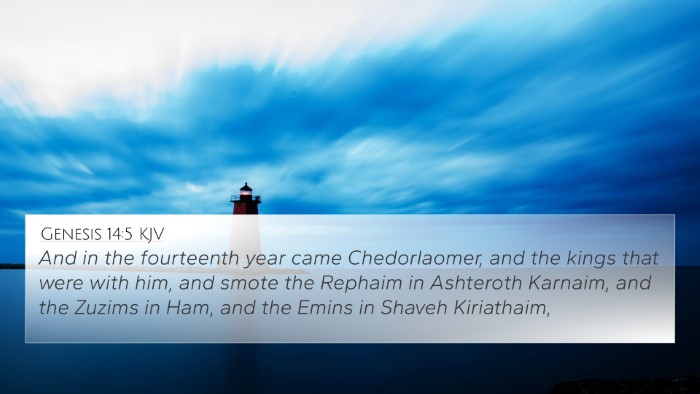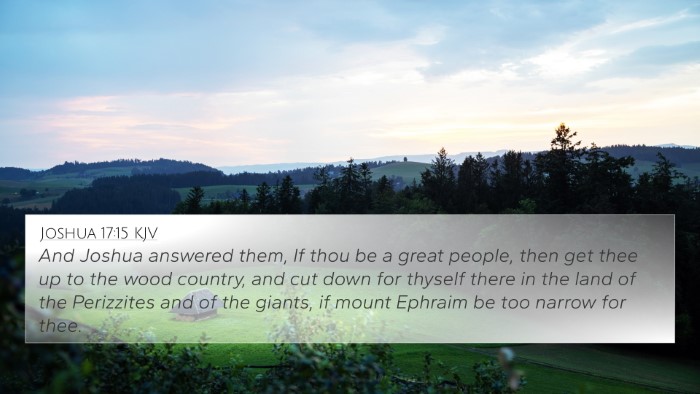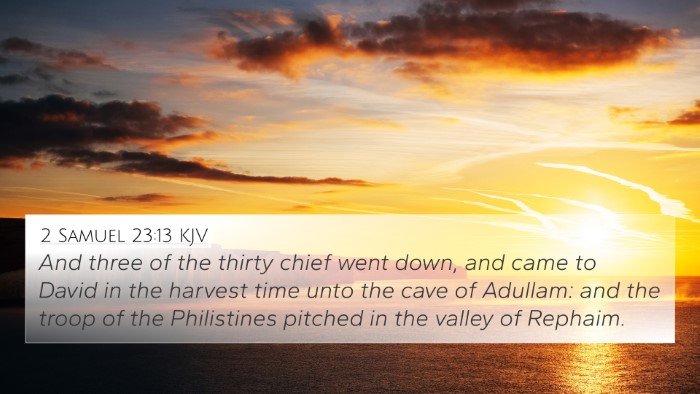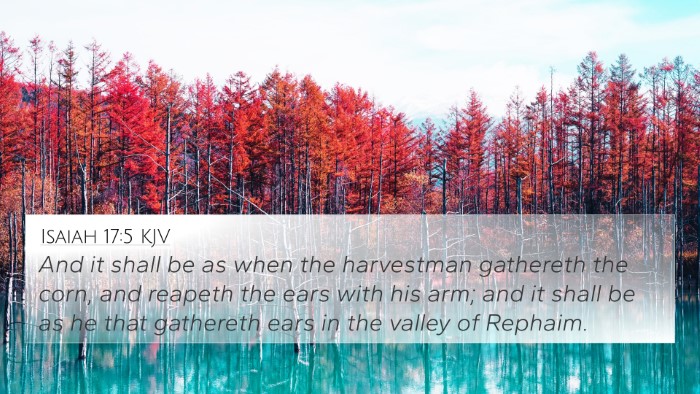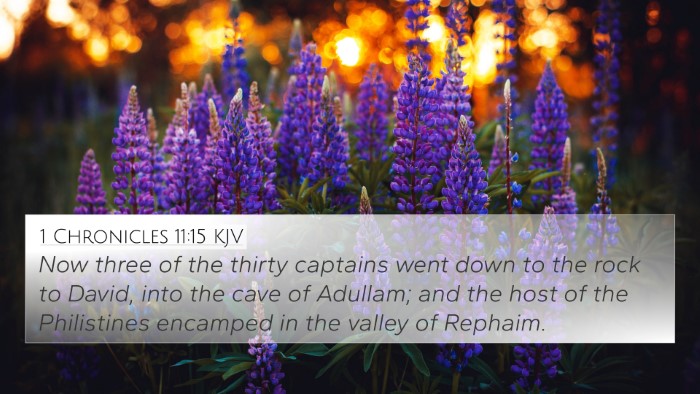Understanding 2 Samuel 5:18
2 Samuel 5:18 states, "The Philistines also came and spread themselves in the valley of Rephaim." This verse marks a significant moment in the biblical narrative as it introduces a conflict between the Israelites and the Philistines. To comprehend the depth of this statement, we can explore insights from noted public domain commentaries such as those by Matthew Henry, Albert Barnes, and Adam Clarke. Through these perspectives, we can uncover layered meanings and implications inherent in this scripture.
Context of the Verse
The context of 2 Samuel 5 provides vital insights. Following David’s anointing as king, his reign begins amidst challenges posed by longstanding enemies, notably the Philistines. This historical backdrop sets the stage for spiritual themes, battles, and divine interventions that are prevalent throughout the scripture.
Commentary Insights
Matthew Henry’s Commentary
Matthew Henry emphasizes that the appearance of the Philistines in the valley of Rephaim signifies a formidable threat to David’s newly established kingdom. He suggests that such opposition is expected when God's work is advancing. Henry notes that there is often spiritual warfare that accompanies moments of significant progress in faith and leadership.
Albert Barnes’ Commentary
Albert Barnes expounds on the geographical significance of the valley of Rephaim as an area of previous confrontations. Barnes connects this with the broader strategy of David as a military leader. He points out how David’s response to this challenge sets the tone for his military campaigns, showcasing reliance on divine guidance in times of adversity.
Adam Clarke’s Commentary
Adam Clarke provides a detailed analysis of the name 'Rephaim,' which may denote 'giants' or 'the dead'. He suggests a historical awareness in the Jewish culture regarding the giants of the land faced by previous generations. Clarke connects this verse with the theme of overcoming past fears and obstacles through faith and trust in God's provision.
Thematic Connection to Other Scriptures
The verse within the broader context of the Bible can be connected thematically to various scriptures. Below are notable cross-references that enhance our understanding of this passage:
- 1 Samuel 17:1-51 - David's encounter with Goliath highlights prior encounters with Philistine threats and how God empowers those who trust in Him.
- 2 Samuel 5:22 - Chronicles further Philistine confrontations, showing God's continued assistance to David.
- Psalm 18:29 - Reflects on how God strengthens us to face foes, resonating with David’s reliance during conflict.
- Joshua 15:8 - Provides geographical context to the valley of Rephaim and its historical backdrop.
- Isaiah 17:5 - Speaks to growth and challenges regarding the Philistines, emphasizing continuity of conflict.
- 1 Chronicles 14:9 - Reiterates the encounters with Philistines and God’s guidance in battle.
- Exodus 14:14 - Inspires faith in God's deliverance, relevant in the face of overwhelming opposition, similar to that faced by David.
- Romans 8:31 - Encourages believers facing challenges, affirming that with God on our side, no one can successfully oppose us.
Inter-Biblical Dialogue
Understanding 2 Samuel 5:18 involves exploring its inter-Biblical dialogue. The constant theme of faith amid adversity resonates throughout both the Old and New Testaments, serving as a reminder of God’s sovereignty and support. The narrative of David encourages believers to reflect on their reliance on God during times of trial.
Conclusion
In conclusion, 2 Samuel 5:18 provides profound insights into the conflicts faced by David as king. The commentary from Matthew Henry, Albert Barnes, and Adam Clarke highlight essential themes of spiritual warfare, divine guidance, and historical context. Through cross-referencing this verse with others, one can build a comprehensive understanding of how God equips leaders to face challenges, reinforcing the theme that faith triumphs over fear and obstacles.
Tools for Further Study
For those interested in pursuing deeper understanding, several tools can facilitate effective Bible cross-referencing:
- Utilizing a Bible concordance allows for easy look-up of terms and their occurrences.
- A Bible cross-reference guide encourages thematic studies.
- Engaging in cross-reference Bible studies helps connect scriptures related to specific narratives.
- Implementing a comprehensive Bible cross-reference system can enhance understanding within contexts.




